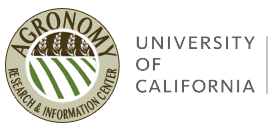This project serves to increase the use of sorghum as a multi-purpose, low-input crop for California.
Sorghum, an ancient old-world crop rediscovered in the new world
Sorghum is an ancient African cereal grain, domesticated some 8000 years ago in the region of Southern Sudan and Ethiopia. It is the fifth most important cereal grain after rice, wheat, maize and barley and is a dietary staple for more than 500 million of the most food-insecure people in the world. The whole sorghum plant is used, with the grain being a major food and feed staple, the leaves and stems for livestock, and the sweet juice for syrup and molasses production. Sorghum is not new to the United States. It more than likely traveled to the US via the slave trade; however, the first recorded evidence of sorghum is in 1757, when Benjamin Franklin wrote about broomcorn, a specialty sorghum, to a friend. It is not new to California, having been introduced to the state as an animal feed in the late 1800s.
Sorghum is a drought-tolerant, relatively low input crop with wide adaptability, which can be grown on 85% of the arable land in the world. It is also gluten-free and can therefore benefit those with celiac sprue and other gastrointestinal disorders. UC researchers are rediscovering the importance of sorghum as a worthwhile rotational crop and forage that can help California meet its future water needs, specialty food markets, and potentially as an important renewable fuel crop.

